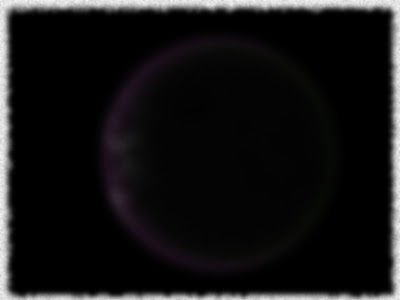Five days after the first Mun-rover set it's wheels down on the surface, an almost identical vehicle touched down to roam the dusty plains. The second rover, Celestia XIV, was launched on a Union A-2B launch vehicle, which is a stripped-down version of the more popular A-2A (the difference being the absence of a RCS in the booster, making the vehicle considerably lighter). This allowed the second-stage booster to take up some of the slack when it came to a braking-burn at the Mun, meaning the decent module had more fuel for a more precise landing.
The second Mun rover explores some treacherous terrain in this impression
The mission was very nearly doomed from the start, however, as the descent module lowered the rover to the surface. When the vehicle detached, instruments reported a near fatal tumble as it hit the surface. It turned out the rover was dropped on a slope. Luckily, Celestia XIV bounced back onto its wheels.
Atlas Crater, within the Lake of Hope, will be explored by the second rover
Celestia XIV is almost a direct copy of the Celestia XIII, but with the addition of a high-resolution VDS camera as well as the familiar LazorCam. A remote software update to the Celestia VIII orbiter allowed the probe to be used as a relay to boost the high-resolution images of the VDS Cam from the rover back to Mission Control. This offers a much more detailed study of the Mun's surface, which will help scientists design future missions.
First visual confirmation that the second Mun rover had landed inside the giant Atlas Crater. This image is from the fully-maneuverable LazorCam, which the vehicle sends directly back to Mission Control. It is transmitted in an almost live-feed fashion and is the primary viewing hardware for driving the rover
The same shot from the new high-quality VDS Camera, which is sent back to Mission Control via the Celestia VIII orbiter probe. The shortcoming of sending these images back is that the data can only be transmitted when the orbiting Celestia VIII is overhead
The rover will proceed to climb Mount Atlas over many months, collecting images and data on it's long journey. In the last few days, Celestia XIV has already encountered some dangerous terrain, proving that the Mun's atmosphere-free surface and bland landscape can create some potentially lethal optical illusions. But, at the same time, makes for some striking scenery.
First view of Mt. Atlas, where the rover will spend the next few months ascending
To begin with, the rover heads east of the mountain toward the ridge seen in the background
After much travelling, the ridge turns out to be a sheer cliff and is actually a wall to a large crater inside Atlas Crater. There are even more craters within. Celestia XIV perches on the edge and looks down into the sights below
The rover will follow the ledge toward the mountain, which is captured in this impressive image using the VDS camera



















































